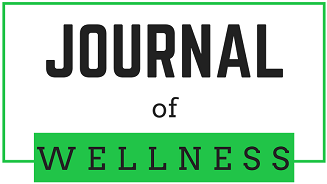
Abstract
Introduction: Sustainable methods of dietary lifestyle changes are essential to long term weight loss maintenance and enhancement in overall health and wellness. A novel modified alternative method to caloric restriction is Time-Restricted Feeding (TRF), a sub-type of Intermittent Fasting. The purpose of this pilot study was to determine the effect of four weeks of TRF (without caloric deficit) on body composition, stress levels, sleep quality, hunger level, and quality of life.
Methods: Sixteen participants, 9 males and 7 females, mean age 34.0 ± 11.7 years, completed the four-week protocol. Fasting program was 16 hours from the time of last meal of the evening to start of first meal the following day. Participants were required to consume their normal daily caloric intake within an 8-hour period.
Results: There were significant reductions in mean body fat percentage (26.2±2.4 vs. 25.5±2.6, p=0.01), visceral fat (cm2) (98.2±15.3 vs. 94.1±15.7, p=0.003), body fat mass (kg) (21.6±3.0 vs. 21.0±3.2, p= 0.02), trunk fat (kg) (11.5±1.6 vs. 11.0±1.6, p=0.001) and stress levels (14.1±1.9 vs. 11.0±1.4, p=0.03). There was a significant drop in hunger levels over time (χ2 = 16.4, p=0.001). There were no significant changes in sleep quality or quality of life.
Conclusion: TRF may be an effective option to decrease stress, body fat, visceral fat, and obesity-related diseases while not disrupting sleep quality and Quality of Life. Our pilot study demonstrated potential health benefits that could be incorporated by healthcare workers into whole-person wellness programs.
DOI
10.18297/jwellness/vol3/iss2/10
Recommended Citation
Bains, Gurinder; Lohman, Everett; Moh, Michael; Daher, Noha; and Berk, Lee
(2021)
"Four Weeks of 16:8 Time-Restricted Feeding on Stress, Sleep, Quality of Life, Hunger Level, and Body Composition in Healthy Adults: A Pilot Study on Wellness Optimization,"
Journal of Wellness: Vol. 3
:
Iss.
2
, Article 10.
DOI: https://doi.org/10.18297/jwellness/vol3/iss2/10
Available at:
https://ir.library.louisville.edu/jwellness/vol3/iss2/10
